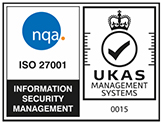Beware the Emergency Department (Part II)
Assessment
This requires a mental health history including any history of documented social behavioural conditions, conduct disorders, ADHD, psychosis/schizophrenia or autism.
In the medical history, identification of trigger factors is important along with any difficulties in the following areas:
- Cognitive functioning
- Language/communication disorders
- Cultural or belief barriers/understanding
De-escalation
As has been indicated, de-escalation should be employed. Measures include using calming strategies, going to a quiet area, and building contact with the individual to keep a therapeutic relationship. The emphasis on the management of violent/aggressive patients is to avoid the development in the first place, or to stop the escalation of violence by communicating with the patient.
Physical restraint
Restraint should only be used if the individual becomes aggressive and violent. This should be carried out by a team who are trained in restraint techniques, with there being clearly defined roles and an identified leader.
For children, the same sex person should be used to undertake physical restraint. NICE gives advice for when mechanical restraint can be used:
“…….when transferring young people between medium and high-secure settings (1.7.19), or mechanical restraint in young people is used, only in high-secure settings (on those occasions when young people are being treated in adult high-secure settings), in accordance with the Mental Health Act 1983 and with support and agreement from a multidisciplinary team that includes a consultant psychiatrist in CAMHS”
Handcuffs should be considered for the movement of young people with high risk of violence between medium and high secure settings, with the handcuffs being taken off as soon as possible.
It is recommended NOT to take the person to the floor, i.e. avoid this occurring, but should it happen the supine position is preferred (face up); if in the prone position (face down) this should be used for the shortest period of time possible.
Care must be taken not to impinge on the airway or interfere with the person’s breathing or circulation, e.g. the mouth and nose must not be obstructed. Particularly at risk from restraint are the elderly, pregnant, obese or generally unwell. Deaths are recorded as occurring during or as a consequence of restraint.
The recommendation from NICE about how long to allow the restraint for is no more than 10 minutes; if it is predicted that the individual may need physical restraint for longer than this period, then medication should be considered as per rapid tranquillisation protocol.
During the restraint
The level of force must be proportionate, justifiable, reasonable and used for the minimum period of time.
One of the restraining team should take a role as leader and ensure the following steps are kept throughout the restraint:
- the patient’s head and neck is protected and supported
- be able to check the vital signs and check that the airway and breathing are not compromised
After the restraint, physical and psychological health should be monitored.
Rapid tranquillisation
This is administration intravenously (IV) or via the intramuscular (IM) route to effect sedation. This may be when oral administration is not possible, or when a faster response is needed.
The choice of agent depends on any preference expressed by the patient prior to this episode, any physical health problems, pregnancy, or any previous important health related matters including any previous adverse events.
The recommended agents for use in adults include:
- IM lorazepam
- IM Haloperidol with IM promethazine
- If there is no/poor response other options can be considered (as detailed in the NICE guidance)
After rapid tranquilisation, the pulse, blood pressure, respiratory rate, temperature, hydration state and level of consciousness should be measured at least hourly or more frequently should the person appear asleep (or if that person has already taken other medication, i.e. prescribed or recreational substances including alcohol).
MEDICO-LEGAL ASPECT
Deaths that involve physical restraint often make the headlines but are fortunately infrequent. There is little published in this area, however the Review of the Medical Theories and Research Relating to Restraint Related Deaths (produced by the University of Central Lancashire, published 2011) is a recommended and very informative report. More frequently encountered is physical injury but not of a life threatening status. As seen above, the grounds for the use of force have to be adhered to, and it would be considered good practice to document such an event.
Rapid tranquillisation does have risks too, with some agents used being potentially life threatening. This can be due to: abnormal heart rhythms developing in response to the drug(s) (which is more likely if the patient is already on medication); seizures; and (very rarely) an abnormally high temperature due to an adverse effect by the body in reaction to the drug(s) used for sedation. These side effects are probably relatively rare, however, there is no collected documentation for the use of sedation in the ED.
Should there be a case relating to injury/death from restraint or rapid tranquillisation, it is advisable to consider obtaining expert evidence from an ED physician, and perhaps a psychiatrist and even pharmacologist (the latter to determine the influence of drugs in the situation of an adverse event relating to rapid tranquillisation).
If you would like further information about this particular topic, or wish to discuss the possibility of bringing a claim for clinical negligence - or indeed any other type of injury, please contact the Dutton Gregory Clinical Negligence Team on (01202) 315005, or email k.marden@duttongregory.co.uk
NB This article does not constitute legal advice and should not be relied on as such. No responsibility for the accuracy and/or correctness of the information and commentary set out in the article, or for any consequences of relying on it, is assumed or accepted by any member of Dutton Gregory Solicitors.






